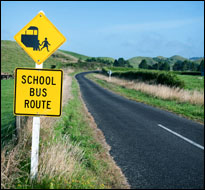
U.S. inner-city schools often receive the lion’s share of attention from education reformers and charter school founders, but rural schools educate up to a third of America’s public school students and face challenges just as daunting as their urban counterparts.
A 2012 study from the University of North Carolina at Chapel Hill investigated factors that could influence the differences in college enrollment and degree attainment for rural and nonrural youths. Published in the American Educational Research Journal, “Rural-Nonrural Disparities in Postsecondary Educational Attainment Revisited” examined data on approximately 9,000 students from the National Educational Longitudinal Study (NELS). The study used NELS definitions of rural, suburban and urban pupils, with “nonrural” referring to both urban and suburban students.
Study findings include:
- Rural youth tend to suffer from higher rates of poverty and have less access to college prep classes and educational counseling resources than their urban counterparts. Their parents tend to be less educated and less likely to encourage their children to attend college.
- Urban students are more than twice as likely to earn a B.A. than their rural counterparts, and suburban students more than 50% as likely.
- “Family income was found to predict college enrollment only for urban students. By contrast, family structure predicted college enrollment only for rural students, whereas the number of siblings predicted only for suburban students. In addition, student church attendance was significantly related to college enrollment only for rural students.”
- Parental involvement and expectations differed between rural and nonrural students, with rural parents earning fewer bachelor’s degrees and holding “lower levels of educational expectations for, and involvement in, their children’s education” than their nonurban counterparts. The authors noted that this puts rural students at a disadvantage, as parental involvement and expectations are “positive predictors” of college enrollment and degree completion.
- Rural students typically benefited from more social resources, including parents who communicate with church members and students’ friends and parents. These resources produced a “small but significant increase in the likelihood of college degree attainment” for rural students.
Rural students’ lower rates of college enrollment and degree completion were “largely because of their lower socioeconomic background,” the researchers conclude. Community resources thus play a particularly important role in helping rural students, who typically experience economic hardship and social isolation to enter and complete college.
Tags: youth, municipal, higher education, parenting, rural
